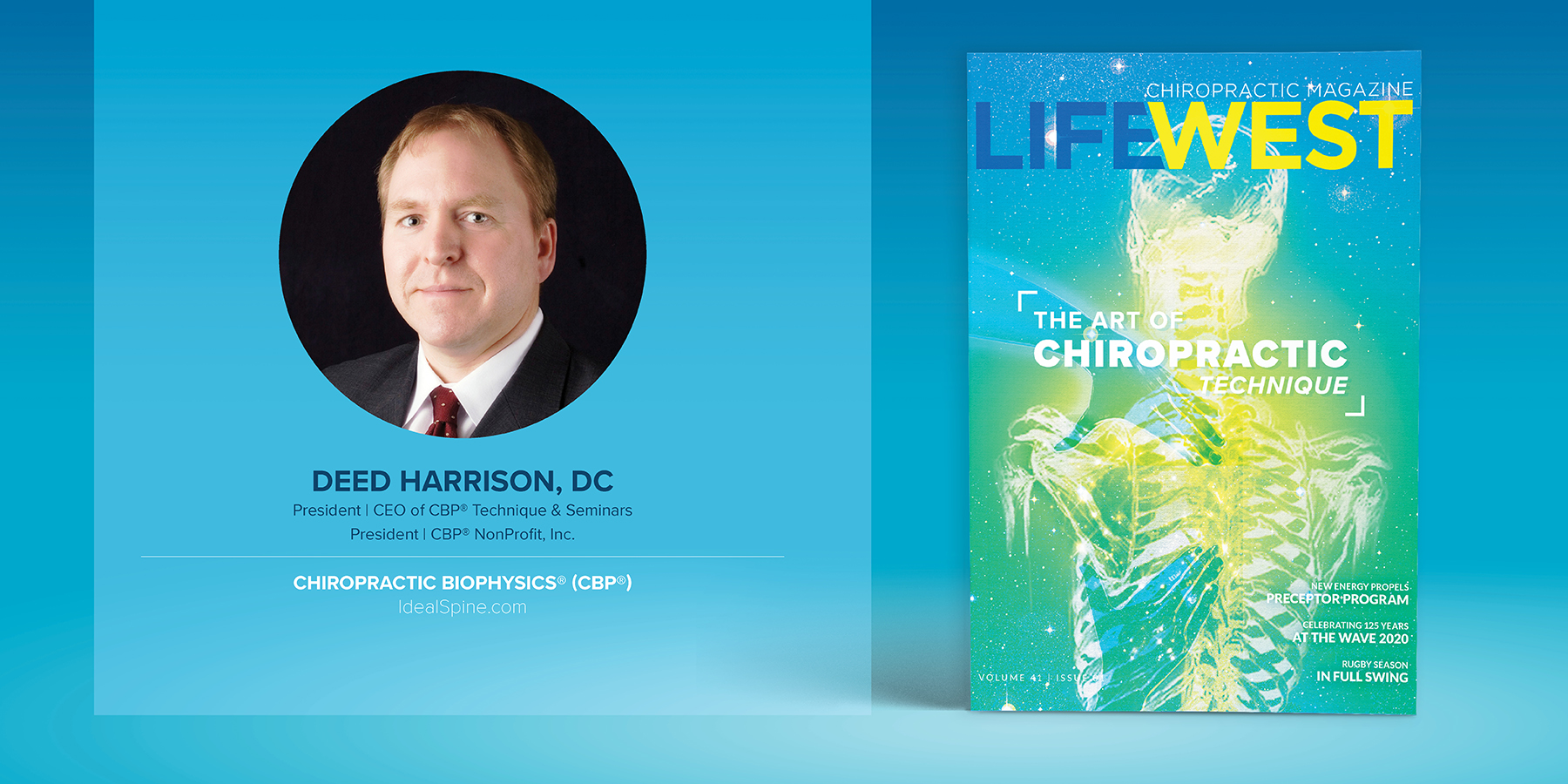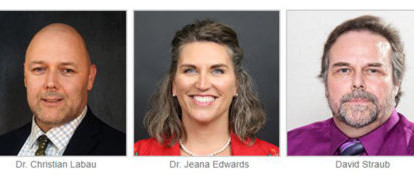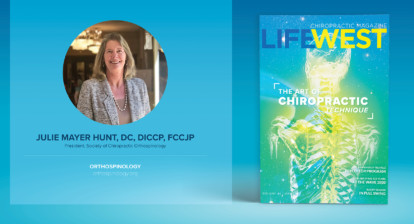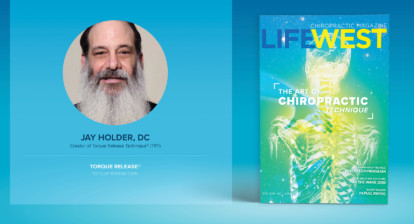This article on Structural / Chiropractic Biophysics® (CBP®) is based on an interview with Dr. Deed Harrison. It is part of a collection of articles on different techniques in the Art of Chiropractic. Please find additional articles on the Art of Chiropractic on our website at lifewest.edu/magazine under the category “Vitalism” in the coming weeks.
Dr. Deed Harrison
- President | CEO of CBP® Technique & Seminars
- President | CBP® NonProfit, Inc.
- IdealSpine.com
Founded: 1980
The CBP® technique was invented and developed in 1980 by Donald D. Harrison, DC. Instead of applying displacements to a single spinal segmental joint, Dr. Harrison presented the displacement of the head, thorax and pelvis as rotations and translations of the main masses of the body. His data showed that spinal coupling patterns (segmental displacements in chiropractic) occur within corresponding spinal junctions between adjacent body masses of the head to thorax, thorax to pelvis, etc.
CBP researchers led by Dr. Harrison and his son, Dr. Deed Harrison, established spinal models for the sagittal plane curvatures. Dr. Deed Harrison wrote in an email for this interview that the research “scientifically defined features of the normal human spine so that valid and reliable measurements of vertebral subluxation could be made in abnormal spine alignment situations,” meaning that subluxations could be measured in standing X-rays.
What’s happening now?
This comprehensive posture and spine rehabilitation system incorporates mirror image® (MI) exercises, adjustments and traction applications to restore normal / ideal spine and posture alignment. Spinal subluxation / displacement abnormalities can affect and alter neurophysiology, human health, functional performance, pain, disability and disease conditions, Dr. Harrison wrote. CBP’s methods have been found to consistently and predictably improve spine alignment toward normal and improve patient health and well-being, which has been verified by long-term follow-up data in numerous studies that have appeared in peer-reviewed publications.
Today, there exists a plethora of published research documenting that CBP Technique is a leading non-surgical rehabilitation system for the restoration of the natural curvatures of the spine, Dr. Harrison wrote.
What’s ahead?
Multiple clinicians and researchers from different disciplines and universities around the world are spearheading CBP research through the technique’s non-profit spine research foundation. As a result, the technique’s methods of assessments and interventions are constantly improving, Dr. Harrison said.
For example, he added, the CBP team has developed in-office spine traction devices and postural corrective braces. “We’ve developed a comprehensive, highly effective, home orthotic spine rehabilitation line called the Denneroll™ spine orthotics,” he wrote. Other examples include posture analysis and movement assessment technology, to quantify a patient’s abnormal posture in true 3-D alignment and movement patterns; sophisticated X-ray analytical software, to quantify spine deformities and compare them to published normal alignment data; and spine deformity braces used in the management of scoliosis and kyphosis deformities.
“This technique should continue to grow in the chiropractic, physical medicine and general rehabilitation settings for spine disorders and for patient health and well-being,” Dr. Harrison said. “CBP will continue to publish high-quality research and develop better patient intervention strategies.”








